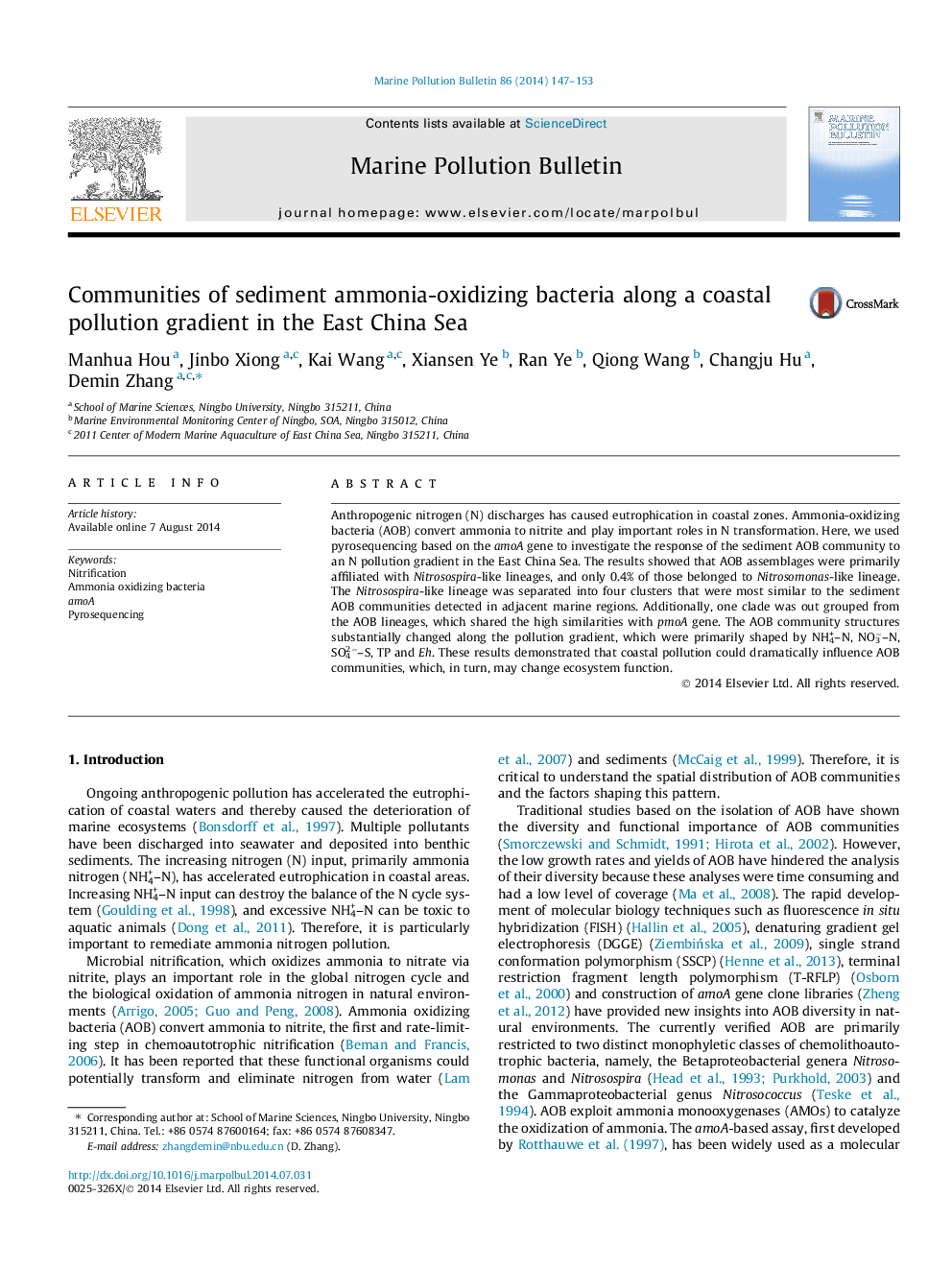| Article ID | Journal | Published Year | Pages | File Type |
|---|---|---|---|---|
| 6357722 | Marine Pollution Bulletin | 2014 | 7 Pages |
â¢AOB community has changed accordingly along the N pollution gradient.â¢Environment uncultured Nitrosospira were the dominant AOB in sediments.â¢We identified key factors driving the responsive pattern of the AOB community.
Anthropogenic nitrogen (N) discharges has caused eutrophication in coastal zones. Ammonia-oxidizing bacteria (AOB) convert ammonia to nitrite and play important roles in N transformation. Here, we used pyrosequencing based on the amoA gene to investigate the response of the sediment AOB community to an N pollution gradient in the East China Sea. The results showed that AOB assemblages were primarily affiliated with Nitrosospira-like lineages, and only 0.4% of those belonged to Nitrosomonas-like lineage. The Nitrosospira-like lineage was separated into four clusters that were most similar to the sediment AOB communities detected in adjacent marine regions. Additionally, one clade was out grouped from the AOB lineages, which shared the high similarities with pmoA gene. The AOB community structures substantially changed along the pollution gradient, which were primarily shaped by NH4+-N, NO3â-N, SO42â-S, TP and Eh. These results demonstrated that coastal pollution could dramatically influence AOB communities, which, in turn, may change ecosystem function.
